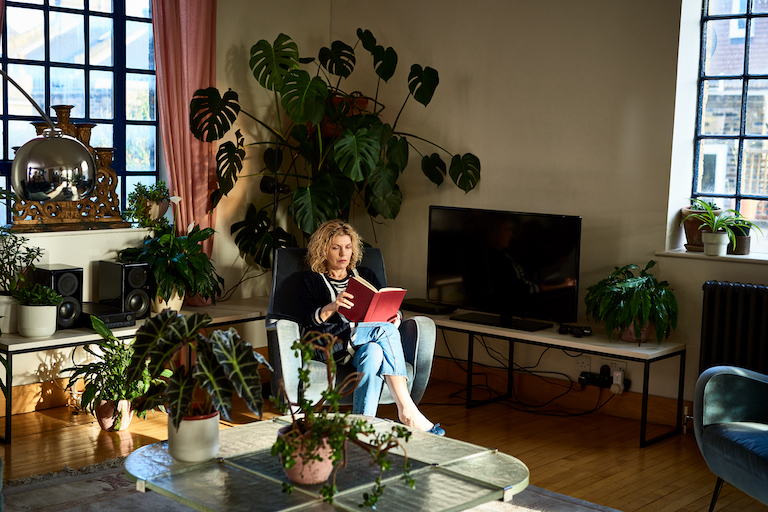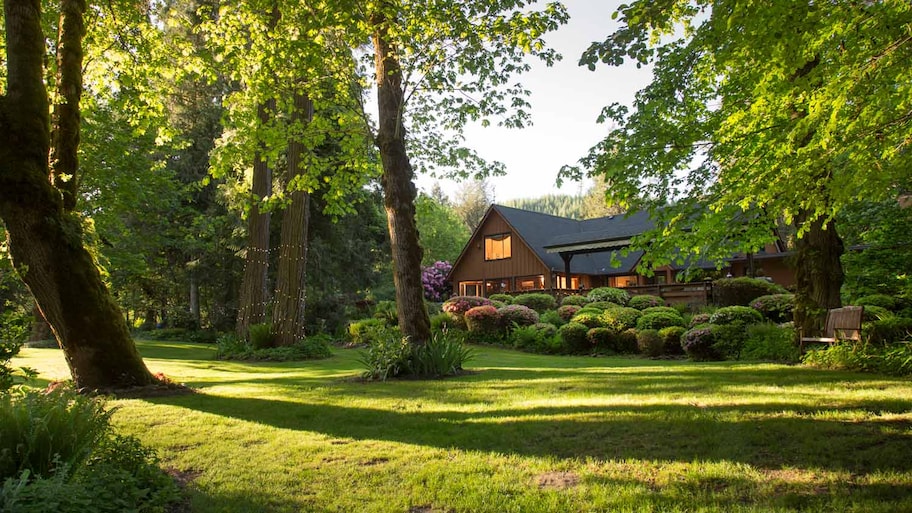What Are the Best Trees I Can Grow Indoors?
Indoor trees can liven up living spaces, bring the great outdoors inside, and add a pop of color to any decor


If you love the outdoors, but hate the bugs, get back to nature and spruce up the inside of your home with the best indoor trees. Have a sunny area in your living room, a low-light corner of your bedroom, a humid bathroom, or a south-facing porch? There are a variety of indoor trees that do well anywhere they live.
The Best Indoor Trees to Grow in Your Home
A fringe benefit to adding indoor trees to your living spaces is that they have air-cleaning qualities. There’s nothing like bringing a breath of fresh air into your home.
But that’s not all they offer. Out of these popular species of indoor trees, there’s no doubt you will find one that will bring the joy of gardening inside.
Note: If you have pets or children, consult your veterinarian, doctor, or the ASPCA to ensure the indoor trees listed here are safe to have in your home.
Best 4 Indoor Trees for Indirect Light
Indirect light means these indoor trees can tolerate a low light source—large windows or skylights—as long as you don’t place these plants in direct sunlight during the day.
1. Weeping Fig
One of the most popular indoor trees is the weeping fig, also known as a ficus tree. It has a light gray trunk that you can braid for extra decoration. Weeping figs also have glossy dark green leaves that may drop when stressed or placed in a particularly dark corner. That’s why a room with large south-facing windows is best.
Because they can grow to more than 6 feet tall, you may want to keep them pruned. They do best in well-drained soil, and you should only water them when the surface is dry to the touch.
Light: Indirect sunlight
Water: When the surface is dry to the touch
Average height: 3 to 6 feet
2. Rubber Tree
Rubber trees have large, glossy dark green leaves that do very well in a humid environment and pop against a pale wall color. They like temperatures between 50 and 80 degrees Fahrenheit and bright, indirect sunlight. To keep its leaves shiny, wipe them with a damp cloth to remove dust. To make sure the leaves grow to maximize size, fertilize every couple of weeks.
Light: Indirect sunlight
Water: Moist, not wet
Average height: 6 to 10 feet
3. Corn Plant
This plant’s long slender leaves look very much like that of a stalk of corn. Thus, the name. Like corn, it is drought tolerant. But unlike real corn, it can handle all levels of light except full sun. If you overwater your corn plant, its leaves will turn yellow.
You might also see some shedding of the lower leaves, leaving a bare trunk and a bushy crop of leaves on top. This is normal, and there is no cause for concern, making the corn plant a unique conversation point.
Light: Indirect sunlight
Water: Let the soil dry out between watering
Average height: 4 to 6 feet
4. Money Tree
The money tree gets its name as a good luck charm for your finances. It has a unique shape, bright green leaves, and a twisted trunk that’s drop-dead gorgeous. It’s a hardy plant that you can forget about every once in a while. But to keep it healthy, it’s best to water it every week. The money tree tolerates most conditions as long as it’s not exposed to the draft from an air conditioner for extended time periods.
Light: Indirect sunlight
Water: Every week or so
Average height: 4 to 6 feet
Which 3 Indoor Trees Do Best in Low Light?

Not every corner of the house has a direct light source from large windows or skylights. That’s why it's nice to know various indoor trees do very well in low-light areas.
1. Lady Palm
The slow-growing lady palm is a favorite indoor tree that can tolerate low-light areas in your home. Its fan-shaped leaves bring the tropical rainforest inside. The palm doesn’t do well in direct sunlight, and you’ll have to water it more often in the spring and summer months and less in the winter. Because of its slow growth rate, you can place the lady palm in corners that might be a tight squeeze for other indoor trees.
Light: low light
Water: Moderate watering
Average height: Up to 6 feet
2. Norfolk Island Pine
Some people use the Norfolk island palm as an indoor Christmas tree you can enjoy all year long. This indoor tree grows very slowly, about 2 feet per year. It can grow up to 200 feet tall if not pruned. It grows best in low light but will tolerate full sun if the soil is kept moist. To keep your pine green and your floor needle-free, fertilize the soil once every three to four months.
Light: low light
Water: Moderate watering
Average height: Up to 6 feet (inside)
3. Tree Fern
The tree fern is native to Australia. It has fronds like a fern and a thick trunk covered in fur, which grows straight and tall—up to 10 feet. The fronds can reach lengths of 4 feet, so it’s best to place your tree fern in a place where it has room to grow. Keep the soil moist at all times and out of direct sunlight. As the lower fronds turn brown, you can prune them without hurting the plant.
Light: low light
Water: Keep moist
Average height: Up to 10 feet
Best 3 Indoor Trees for Direct Sunlight
If you have large windows or a screened-in porch that gets direct sunlight most of the day, then you’ll love these indoor trees that will remind you of the topics all year long.
1. Banana Super Dwarf Cavendish Tree
Now, you can grow your own bananas indoors. Although the bananas are smaller than store-bought bananas, you can still eat them—and kids seem to love the size. They don’t grow as tall as some other indoor trees—up to 3 feet— and do best in full sun. They grow fast if you keep them fertilized and watered and will produce fruit after the first year of planting.
Light: Full sun
Water: Keep moist
Average height: 3 feet
2. Bird of Paradise
The bird of paradise is one of the most unusual and beautiful indoor plants and a cousin to the banana tree. Surprisingly easy to grow, its bright orange or white flowers bloom in late winter to early spring and can grow to 12 to 19 inches long. They will shred if brushed often in a busy hallway, so keep that in mind when placing these indoor trees in your home. There is no trunk, so the flowers seem to bloom right out of the soil, making them perfect for growing in a large pot.
Light: Full sun
Water: Keep moist
Average height: 3 to 6 feet
3. Dwarf Meyer Lemon Tree
If you live in an area where you can’t grow fruit trees, you will definitely appreciate the scent of the Meyer lemon trees’ flowery blooms and fruit—better by far than any room freshener. They are a bit finicky to grow as you must keep them watered and in direct sunlight. They do very well when placed outside on a sunny deck during the summer months. They like humidity, and you will need to fertilize them often. When the fruit is ready to eat, get out your best lemon bar recipes.
Light: Full sun
Water: Keep moist but not wet
Average height: 6 to 10 feet
Which 2 Indoor Trees Are Low Maintenance?
Indoor trees that are low maintenance are great for anyone who works all day or takes regular trips out of town. Most survive just fine in sunlight or low light and only need watering when the soil becomes very dry. But as most plants need regular watering, most indoor trees will need your attention to remain healthy.
1. Jade Tree
The jade tree is best for anyone who missed out on the green thumb gene because of its low maintenance. It has succulent leaves and a thick trunk and can tolerate cooler winter weather. If you don’t have a lot of time for house plants or you’re away from your home all day, you only have to water the jade tree every few weeks and keep it in a sunny window to see it thrive.
Light: Direct sunlight (4 to 6 hours per day)
Water: When the soil is dry
Average height: 3 to 6 feet
2. Bamboo
Although most bamboo gets very tall, some varieties can be grown inside. Golden bamboo is one of the best. The bright green canes grow straight and tall—up to 8 feet—and turn the color of gold with age and if kept in direct sunlight. Bamboo grows quickly but won’t grow as large when planted in a container. Bamboo makes a beautiful accent piece that requires little maintenance and will grow in almost any room of the house with plenty of sunshine.
Light: Direct sunlight
Water: When the soil is dry
Average height: 5 to 8 feet
Brighten Any Room
Indoor trees can bring in the great outdoors, dress up a corner of a living room, spruce up a bathroom, or upgrade your bedroom. Most do well with a bit of tender loving care, but some require little maintenance on your part, except a drink of water now and again.
Some tree varieties are toxic to pets and kids, so keep that in mind when choosing which of these trees listed here are right for your home.














